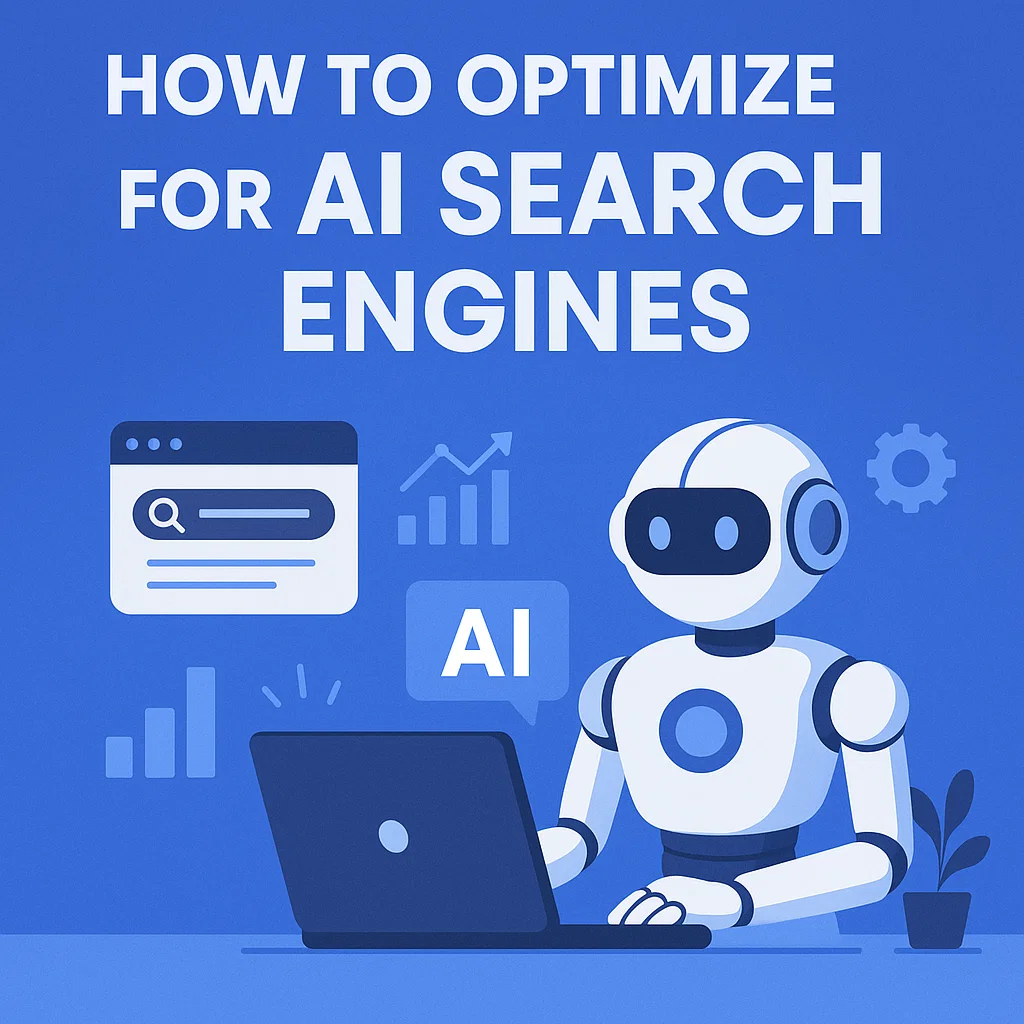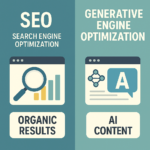(Generative Engine Optimization 2025 Guide)
Ever asked ChatGPT a question… and it gave you the perfect answer from someone else’s blog?
That’s AI search in action—and your content can be the one it chooses to quote.
In today’s landscape, being found on Google isn’t enough. You need your content to show up in AI-powered answers, whether that’s in Google SGE, Bing Chat, or even within apps like ChatGPT. That’s where Generative Engine Optimization (GEO) comes in.
1. Why AI‑Search Optimization Matters
AI search engines evaluate content based on relevance, clarity, and structure—not just keywords. They’re trying to understand what the user really wants and deliver that in a concise, conversational way. So your job? Make your content easy for AI to understand and trust.
Think of it like teaching a smart assistant how to explain your topic in a few helpful sentences. If you train it well, it rewards you with visibility.
2. How to Optimize—3 Key Steps
A. Structure for AI Understanding
If you want AI engines to show your content, here are some key steps you can use to optimize your content.
- Use clear headings that reflect user intent: What is…?, How to…?, Why does…?
- Add short answer snippets (40–60 words) right under your headings.
- Add FAQ or HowTo schema so AI knows what your content is about.
Pro tip: If a user asks, “How do I optimize for AI search engines?”—you want your content to be the one that answers in the preview box.
B. Write Conversational, Intent‑Oriented Copy
- Use natural, friendly language—like you’re talking to someone at a coffee shop.
- Ask and answer real questions you hear from your audience.
- Avoid jargon or over-complication—AI loves clear, concise ideas.
Are you not sure how your readers are asking? You can try using tools like ChatGPT to simulate real questions, or tap into Google’s “People Also Ask” section.
C. Internal Link‑Building for AI Authority
AI uses internal links as trust signals—they show you’re the expert on a topic.
Here’s how to build that credibility:
- Link to your most valuable pages using descriptive anchor text.
- Keep your internal structure consistent and easy to navigate.
- Build clusters: if you’re writing about GEO, link to tools, courses, and case studies that support it.
Ready to go deeper? Check out our GEO Masterclass — your full roadmap to getting found in AI search.
3. Putting It All Together (What to Do Next)
Let’s simplify your plan:
- Write structured, snackable content
- Use a Q&A style for clarity
- Add 10+ internal links across your content hub
- Apply structured data (FAQ, HowTo, Breadcrumb)
- Refresh content every 3–6 months
Want to make it easier? We teach all of this step-by-step in our GEO Masterclass. It’s designed for marketers, not coders—so you can take action fast.
4. Pro Tips to Get Found by AI
- Use “How,” “What,” “Why” headers as conversation cues.
- Speak in your reader’s voice—like they’re asking a friend.
- Keep pages up to date with fresh examples and links.
GEO Optimization Quick Table
| Principle | What to Do | Why It Works |
|---|---|---|
| Structure & Snippets | Use clear headings and short answers | AI search engines can extract featured responses |
| Conversational Tone | Write like a Q&A | Matches how users voice queries |
| Internal Links | 10+ links to relevant pages | Signals topical depth and domain expertise |
| Structured Data | Add FAQ/HowTo/Breadcrumb schema | Enables AI to recognize and feature your content |
| Consistent Updates | Update content every 3–6 months | Keeps you relevant in evolving AI results |





